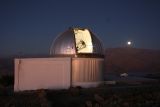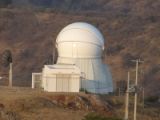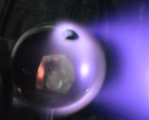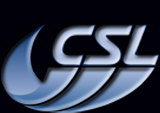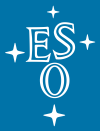Master in Space Sciences
Facilities
Our students have access to several facilities (in Liège and abroad)
in support of their training, either during courses or in the framework of
their Master thesis. This enables a significant part of the educational
programme to be practical, providing students with a high-level preparation
for their future professional activities. In the context of the Master
thesis, students have the opportunity to process and analyse data from
ground-based and space-borne observatories. A non-exhaustive list of these
facilities is briefly presented below.
TRAPPIST
is a robotic telescope located in Chile. It consists of a 60-cm-diameter
primary mirror equipped with a 2k×2k-CCD camera operated with a large
set of broad and narrow band filters. It is mainly dedicated to the search
for exoplanets and the study of small solar-system bodies. Several students
of the Master have been involved in observations that notably led to the
discovery of new asteroids.
The
el-Tigre
telescope located on the site of La Luz (Mexico) is a joint project between
the universities of Hamburg (Germany), Guanajuato (Mexico) and Liège
(Belgium). It is a fully robotic telescope with a primary mirror of 1.2-m
diameter equipped with a spectrometer operating in the full visible domain.
Master thesis topics are frequently proposed in relation with data collected
with this telescope. It is used essentially for stellar astrophysics, in
particular for variability studies of stars over time scales of a few days
up to several years.
The
planeterrella
is a small device designed to simulate planetary auroras. It is used to
reproduce and observe phenomena related to plasma physics and magnetospheric
environments in laboratory conditions. Experiments conducted with the
planeterrella are used as a complement to studies of auroras in the
magnetosphere of giant planets such as Jupiter or Saturn.
The
Centre Spatial de Liège
(CSL) is a research center dedicated to space instrumentation including environmental
test facilities and high-level laboratories. It works for the European Space
Agency, for the space industry and for regional firms. Several space
observatories have been tested or partly built at CSL. Opportunities for Master
theses are frequently given by CSL staff members to Master students.
Beside all these facilities made available to students, it is important to
mention that master thesis supervisors have access to world-class facilities
operated by the
European Southern Observatory (ESO)
and the
European Space Agency (ESA). As a
consequence, many Master thesis topics involve scientific data obtained with
the best ground-based and space-borne observatories.
 Uniquement en anglais...
Uniquement en anglais...